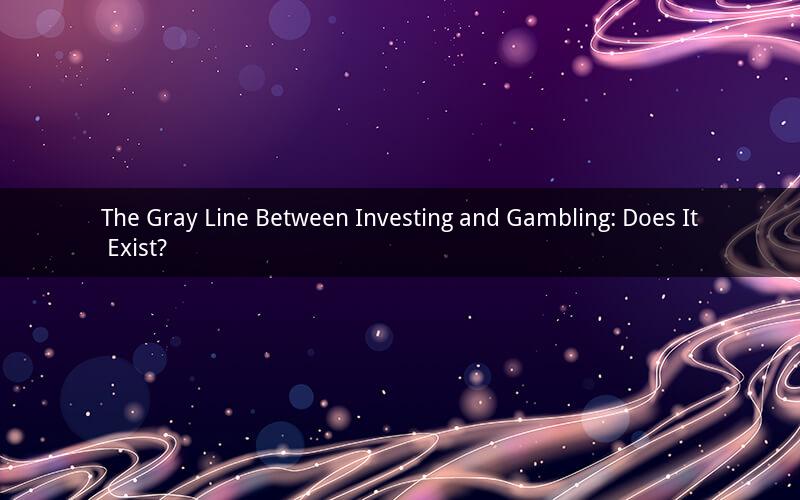
Introduction:
The world of investments is vast and complex, often blurring the line between calculated risk-taking and outright gambling. Many individuals, whether seasoned investors or beginners, wonder if there is a point where investments cross over into the realm of gambling. This article delves into this question, examining the factors that differentiate investing from gambling and the risks involved in crossing this threshold.
1. Understanding the Difference:
Investing is the process of allocating capital in the expectation of generating an income or profit. It involves thorough research, analysis, and a well-thought-out strategy. Investors typically focus on long-term gains, taking into account various factors such as market trends, financial statements, and economic indicators.
On the other hand, gambling involves placing bets on uncertain outcomes, with the primary goal of winning money. It is often driven by luck, chance, and emotions, with little to no research or analysis involved.
2. Risk Management:
One of the key differences between investing and gambling is risk management. Investors are acutely aware of the risks involved in their investments and take steps to mitigate them. They diversify their portfolios, conduct thorough research, and set stop-loss orders to protect their capital.
Gamblers, on the other hand, often have a lack of understanding of the risks involved and may place bets without considering the potential consequences. This lack of risk management makes gambling a more unpredictable and dangerous endeavor.
3. Time Horizon:
Investing typically involves a long-term time horizon, with investors aiming to achieve consistent growth over several years or even decades. They are willing to wait out market fluctuations and temporary setbacks.
Gambling, on the other hand, is often driven by short-term gains and immediate gratification. Gamblers may place bets in the hope of winning big quickly, without considering the long-term implications.
4. Emotional Control:
Emotional control is another crucial factor that distinguishes investing from gambling. Investors remain calm and focused, making decisions based on logic and analysis rather than emotions.
Gamblers, however, may succumb to greed, fear, and other emotional biases, leading them to make irrational decisions. This lack of emotional control can result in significant financial losses.
5. Expertise and Knowledge:
Investing requires a certain level of expertise and knowledge, as investors must be well-versed in various financial instruments, market trends, and economic factors. They often seek advice from financial advisors or conduct their own research to make informed decisions.
Gambling, on the other hand, does not necessarily require expertise or knowledge. It is often based on luck and chance, with no real understanding of the underlying factors that may affect the outcome.
6. The Gray Line:
So, is there a point where investments become gambling? The answer is not straightforward. The gray line exists when an investor fails to conduct proper research, ignores risk management principles, and makes decisions based on luck or emotions rather than logical analysis.
In such cases, investments may resemble gambling, as the individual is no longer acting like an informed investor but rather a gambler. It is crucial to recognize this gray line and take steps to ensure that investments remain well-informed and strategic.
7. Mitigating the Gray Line:
To prevent investments from crossing into the realm of gambling, individuals should:
- Conduct thorough research on potential investments.
- Develop a well-thought-out investment strategy.
- Diversify their portfolios to spread risk.
- Set clear financial goals and time horizons.
- Remain emotionally detached and avoid making impulsive decisions.
Conclusion:
While there is no clear-cut definition of when investments become gambling, it is essential to understand the key differences between the two. By focusing on risk management, emotional control, and informed decision-making, individuals can navigate the complex world of investments without falling into the trap of gambling. Recognizing the gray line and taking proactive steps to mitigate it can help investors achieve long-term success.
Questions:
1. How can one distinguish between a well-informed investment and a gamble?
2. What are some common mistakes made by investors that may lead to gambling-like behavior?
3. How can diversification help in minimizing risks in investments?
4. What role does emotional control play in successful investing?
5. How can individuals develop a long-term investment strategy?